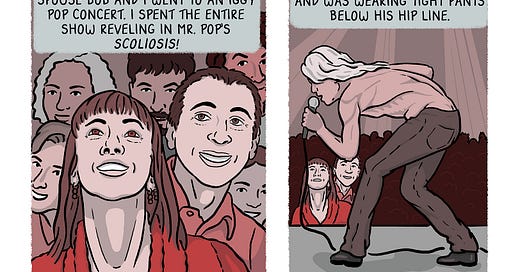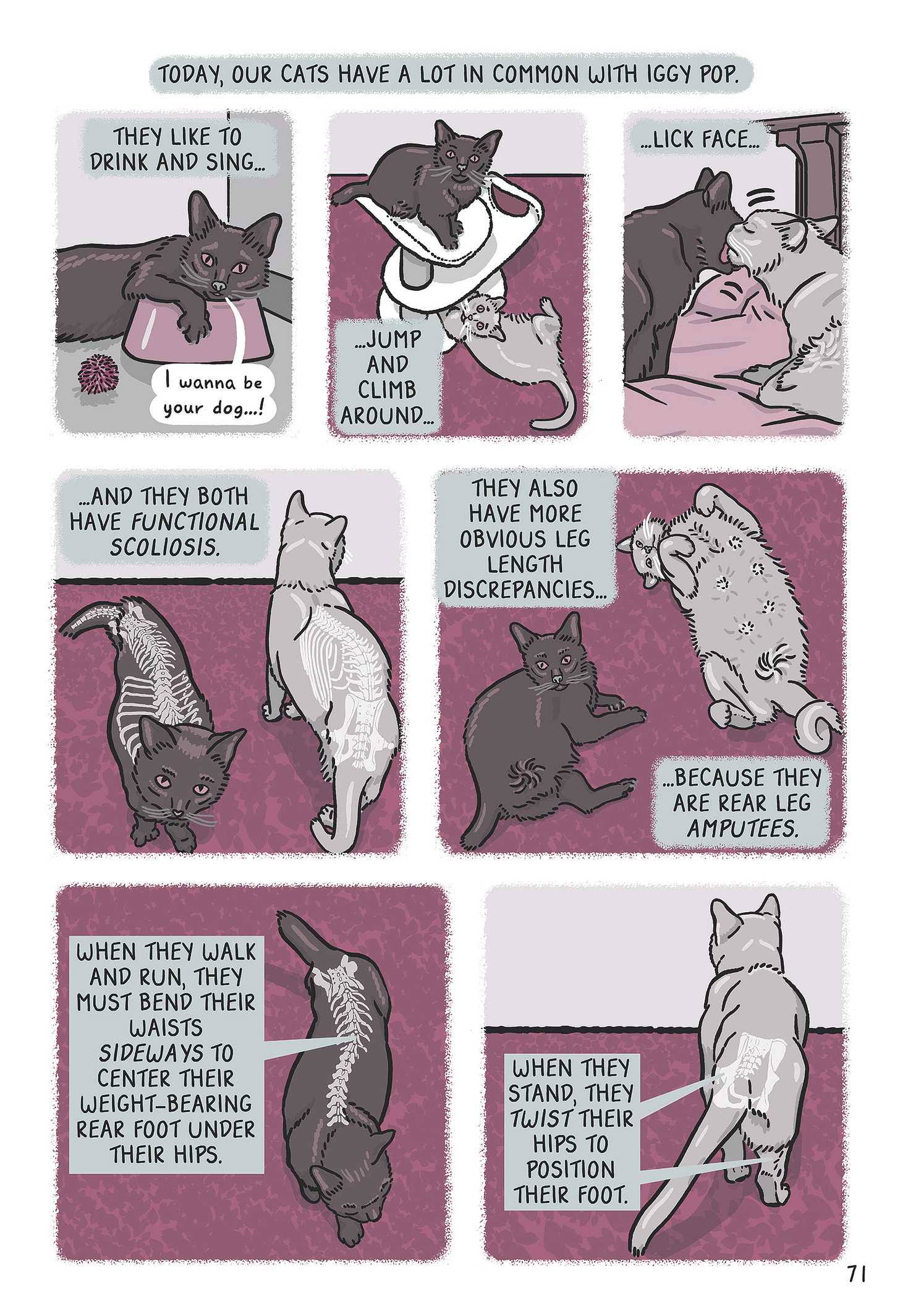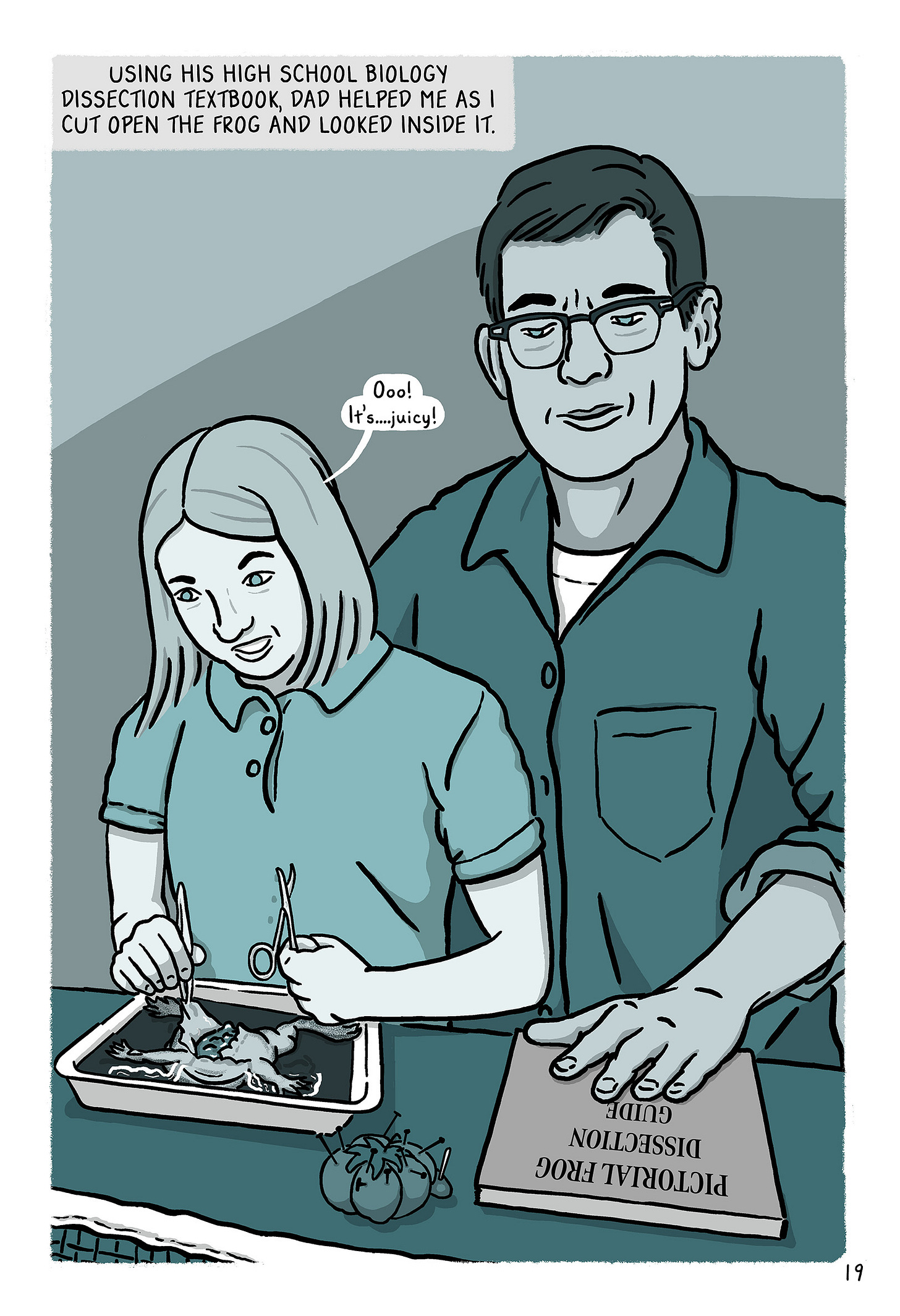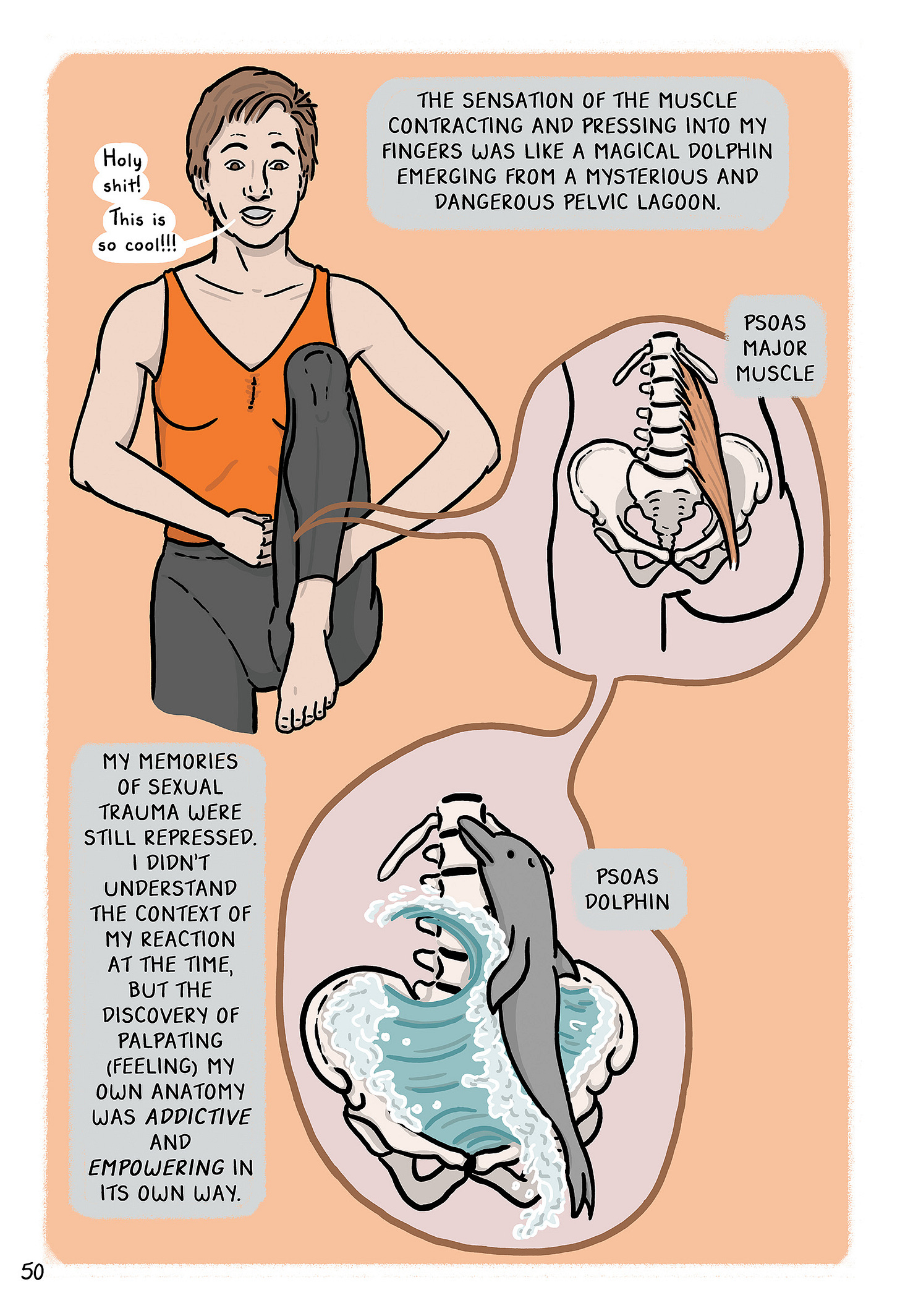An Interview with Kriota Willberg
Hopefully this will humanize anatomical studies, healthcare, and art!
I (Amaris) had the pleasure of meeting Kriota Willberg at the Graphic Medicine Conference last year in Toronto. She told me about teaching medical students art in the cadaver lab, and hosted a great workshop on drawing the objective signs and subjective symptoms of pathological experiences. Today at Autobiographix, she discusses how she came to graphic medicine and an exciting new work in progress.
1. Describe your comics journey—how did you get into making comics?
I was a dancer/choreographer until I got into my mid-40’s. I also had an additional career as a massage therapist/health science educator. Both jobs were very physical, and my hips got arthritic and painful when I danced. I wanted to leave dancing and start a new creative practice as I continued my health science career but wasn’t sure which medium I wanted to engage with. After a lot of mulling it over, I decided to explore a method of blending my interest in body sciences with my future creative practice.
I researched graphic medicine, which was a very new genre at the time. I had been drawing all my life and had been making a number of anatomical illustrations for my anatomy classes. My spouse, R. Sikoryak, is a cartoonist and I consulted with him about making comics. Graphic medicine was a very interesting area to me in that I could finally have a creative practice where I could use experience and information from my interesting “day job” as a foundation for my artwork. Very exciting!
Although my comics drawing style at the time was a bit weak, I thought that because Graphic Medicine was a very new area, I could begin to engage with the GM community even if my work sucked, and hopefully my comics would improve over time. Having been a dance/performance professional for decades, I knew that as long as I kept contributing to any genre and showing up to community events over as long as a decade, I might be seen as a “pioneer” in the field, even if my work didn’t improve that much! (Winky emoji would go here if this wasn’t an article-ha!)
I’ve been working hard at making graphic medicine comics, teaching graphic medicine, drawing, and art, and working as a free-lance, self-taught medical illustrator since 2012. I stopped my career as a massage therapist in 2019. Now, I have been an artist in residence for three medical institutions, and I teach art to scientists and science to artists. I’ve also been a patient and had three major surgeries since I started working in comics. My comics techniques have improved, and I was recently introduced as a “pioneer” in the genre of graphic medicine!
2. How did you develop your voice?
As an artist in all media including choreography, I like to exercise my creative muscle by integrating and personalizing topics, media, and narratives that I find fascinating even when they are often seemingly not related. As an example, see the next question.
3. What are some of the joys and challenges of making nonfiction comics?
Based on some conversations between one of my (former) patients and myself as they talked about other nursing staff, I found I wanted to convince people that all Americans and people around the world should recognize how they have benefited from the enslavement and torture of black people due to unethical surgical research.
As a white woman, I’m very concerned about how I can make comics about racism that influence white readers, and hopefully are not too offensive to BIPOC readers. In a seminar I attended about how to approach sensitive topics, I was advised to address political, humanistic, and sensitive topics from my personal areas of expertise. So, my challenge was, how do I engage with people uninterested in exploring racism and/or medicine?
While I was artist in residence at the New York Academy of Medicine Library historical collection I was also studying bioethics (just for fun) and learned about the physician J Marion Sims who surgically experimented on enslaved women, to treat vesicovaginal fistula. In plain terms, he would sew up holes in the women’s vaginal walls without anesthesia multiple times!
Thanks to my research at NYAM and my studies in bioethics at Montefiore Einstein, I was able to produce a graphic medicine narrative semi-memoir using embroidery, which is an area of my expertise, as a means of understanding surgery and suturing. I also described J Marion Sims’ research on the sewing repair of vesicovaginal fistula by his practicing surgeries on enslaved women.
I used my diverse expertise to entice skeptical readers into diving deeper into the mechanics of surgery, its history, and the unethical surgical techniques that saved lives around the world in the 19th century. Some of these techniques are still referred to in contemporary gynecological practices!
According to some of my readers, it worked! My comic, Silver Wire is now on the American Library Association Black Lives Matter Reading List, a real honor! You can also find a digital version of it at Medium.com.
4. Are you working on something now?
Muscle Memories (a potential but not official title) is a memoir-in-progress to be published by Fantagraphics books. The book is inspired by my arts residency at NYU Langone in the Humanistic Medicine department, where I started teaching a drawing class called Art and Anatomy, to medical students, in a cadaver lab—a dream job that I will continue to teach. My goal for this book is to make readers understand that expertise in any healthcare area, like anatomy, profoundly affects practitioners personally and emotionally as well as professionally. Hopefully this will humanize anatomical studies, healthcare, and art!
Although there are some intensely emotional contexts of studying and drawing from deceased human bodies, I also add some gently humorous pages to soften the intensity of my experiences with cadavers. The pages from Muscle Memories show how how anatomy has affected my life from the age of 11 years old to now, in my sixties! And, I engage personally with living anatomy. In the pages I’m sharing with you, I show myself dissecting a frog with my dad, palpating my own muscles as a dancer in my 20’s, and telling the story of my experience automatically anatomizing Iggy Pop while at his concert, then comparing his behavior and what I assume is his functional scoliosis, to the behaviors and functional scoliosis of my amputee cats!
In the book I also include some of my sketches of dissected bodies, but not here, because some people may not want to see them, even though they are not too gruesome.
Kriota Willberg is a cartoonist and educator specializing in graphic medicine and a retired massage therapist/health science educator. The former artist in residence in the Humanistic Medicine department at the Grossman School of Medicine, NYU Langone, she is now AIR for the Center to Advance Palliative Care (CAPC) at Mt. Sinai. She currently teaches at Parsons School of Design. Illustration clients include Movement Science Made Simple, CAPC, and occasionally a surgeon.
Her self-care for artists book, Draw Stronger (Uncivilized Books), is a popular resource for artists, globally. Self-published works include the Ignatz nominated comic Silver Wire, which was added to the BCALA and ALA Black Lives Matter Reading List. Other comics have appeared in: 4PANEL.ca, Spiral Bound (Medium.com), SubCultures (9th Art Press), Comics for Choice (Silver Sprocket), The Graphic Canon (Seven Stories Press), Intima: Journal of Narrative Medicine, and Strumpet 5, among others.
Credentials: Kriota Willberg MFA-IA, LMT, cert-BE









Thanks. An interesting introduction to an important topic
What a cool and inspiring interview! Kriota's book Draw Stronger helped get my body survive an intense patch of working on my graphic memoir. I was used to stretching for sports, but not so much for sitting (drawing)!